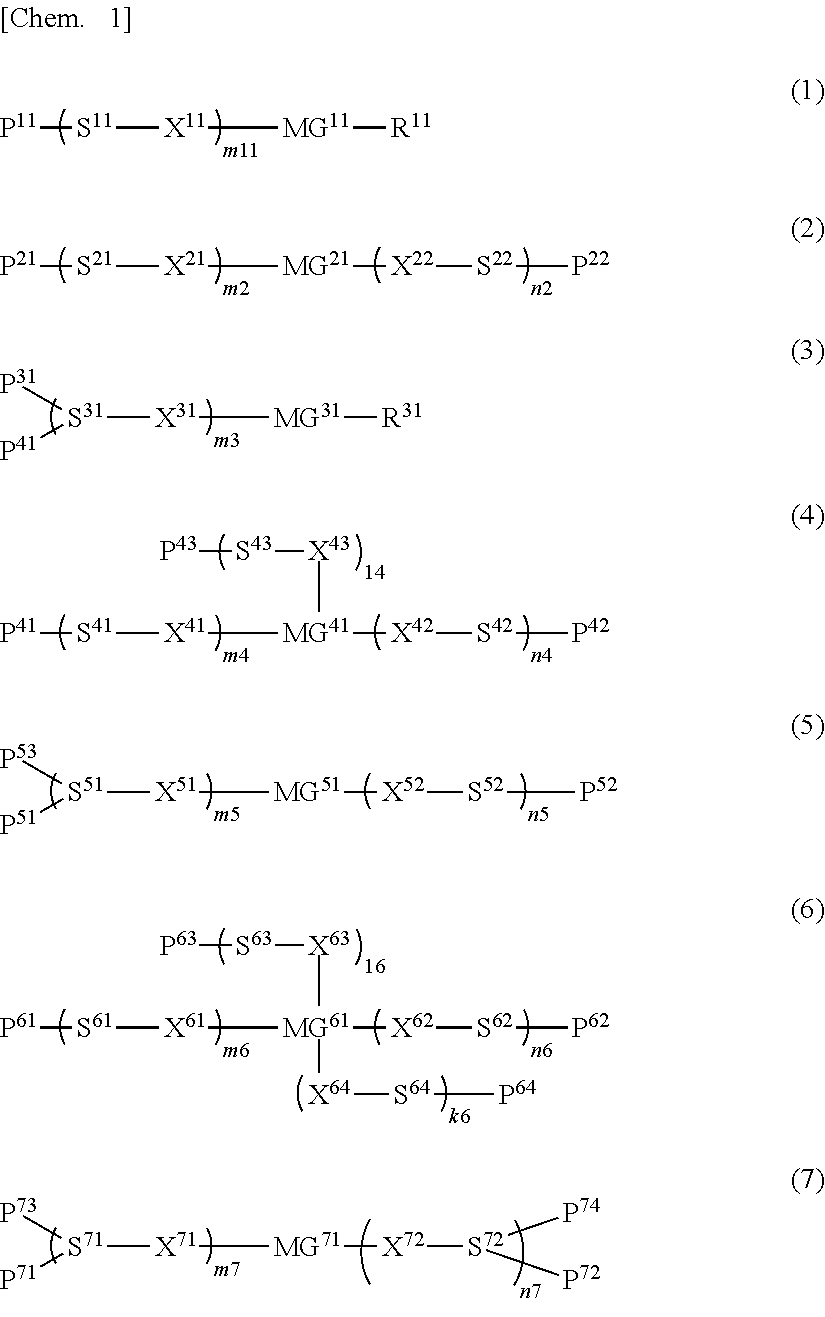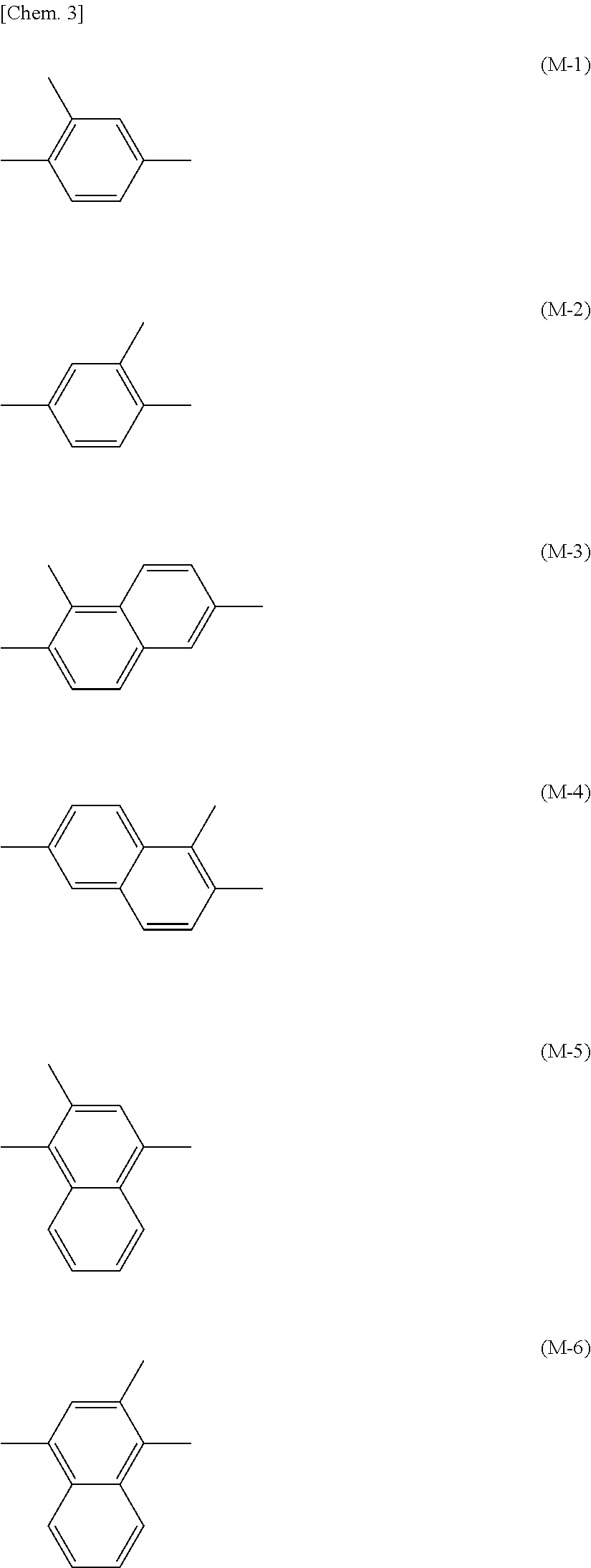Polymerizable composition and optically anisotropic body using same
- Summary
- Abstract
- Description
- Claims
- Application Information
AI Technical Summary
Benefits of technology
Problems solved by technology
Method used
Image
Examples
example 1
[0172]25 Parts of the compound represented by formula (1-a-2), 50 parts of the compound represented by formula (1-a-6), 25 parts of the compound represented by formula (2-a-1) with n=6, and 0.1 parts of the compound represented by formula (I-1) were added to 300 parts of methyl ethyl ketone (MEK) and 100 parts of cyclopentanone (CPN), heated to 60° C., and stirred to dissolve. After dissolution was complete, the mixture was returned to room temperature. Then 3 parts of the compound represented by formula (E-1) and 0.2 parts of MEGAFACE F-554 (F-554: manufactured by DIC Corporation) were added, and the resulting mixture was further stirred to thereby obtain a solution. The solution was clear and uniform. The solution obtained was filtered through a 0.20 μm membrane filter to thereby obtain a polymerizable composition (1) in Example 1.
example 91
[0215]A uniaxially stretched 50 μm-thick PET film was subjected to rubbing treatment using a commercial rubbing device, and the polymerizable composition (32) of the present invention was applied by bar coating and dried at 80° C. for 2 minutes. The coating film obtained was cooled to room temperature and irradiated with UV rays at a conveying speed of 6 m / min using a UV conveyer device (manufactured by GS Yuasa Corporation) to thereby obtain an optically anisotropic body in Example 91 serving as a positive A-plate. The optically anisotropic body obtained was subjected to alignment evaluation, retardation ratio, uneven application evaluation, and durability evaluation in the same manner as in Example 60.
example 103
[0217]A polyimide solution for an alignment film was applied to a 0.7 mm-thick glass substrate by spin coating, dried at 100° C. for 10 minutes, and then fired at 200° C. for 60 minutes to obtain a coating film. The coating film obtained was subjected to rubbing treatment. The rubbing treatment was performed using a commercial rubbing device.
[0218]The polymerizable composition (44) of the present invention was applied by spin coating to the substrate subjected to rubbing and dried at 100° C. for 2 minutes. The coating film obtained was cooled to room temperature and irradiated with UV rays at an intensity of 30 mW / cm2 for 30 seconds using a high-pressure mercury lamp to thereby obtain an optically anisotropic body in Example 103 serving as a positive A-plate. The optically anisotropic body obtained was subjected to alignment evaluation, retardation ratio, uneven application evaluation, and durability evaluation in the same manner as in Example 60.
PUM
| Property | Measurement | Unit |
|---|---|---|
| Volume | aaaaa | aaaaa |
| Fraction | aaaaa | aaaaa |
| Electrical inductance | aaaaa | aaaaa |
Abstract
Description
Claims
Application Information
 Login to View More
Login to View More - R&D
- Intellectual Property
- Life Sciences
- Materials
- Tech Scout
- Unparalleled Data Quality
- Higher Quality Content
- 60% Fewer Hallucinations
Browse by: Latest US Patents, China's latest patents, Technical Efficacy Thesaurus, Application Domain, Technology Topic, Popular Technical Reports.
© 2025 PatSnap. All rights reserved.Legal|Privacy policy|Modern Slavery Act Transparency Statement|Sitemap|About US| Contact US: help@patsnap.com



